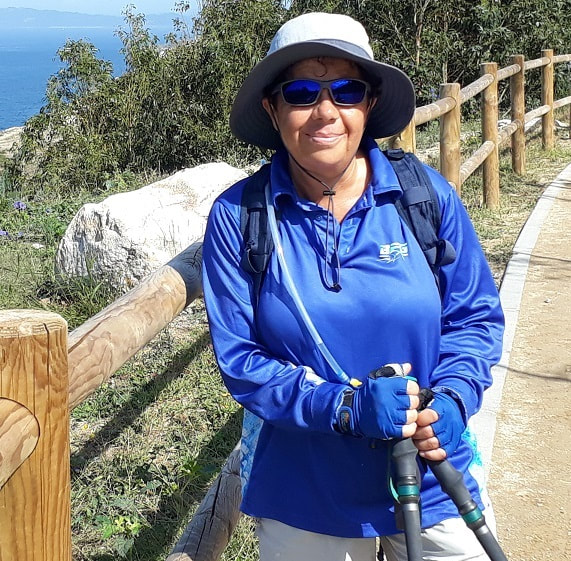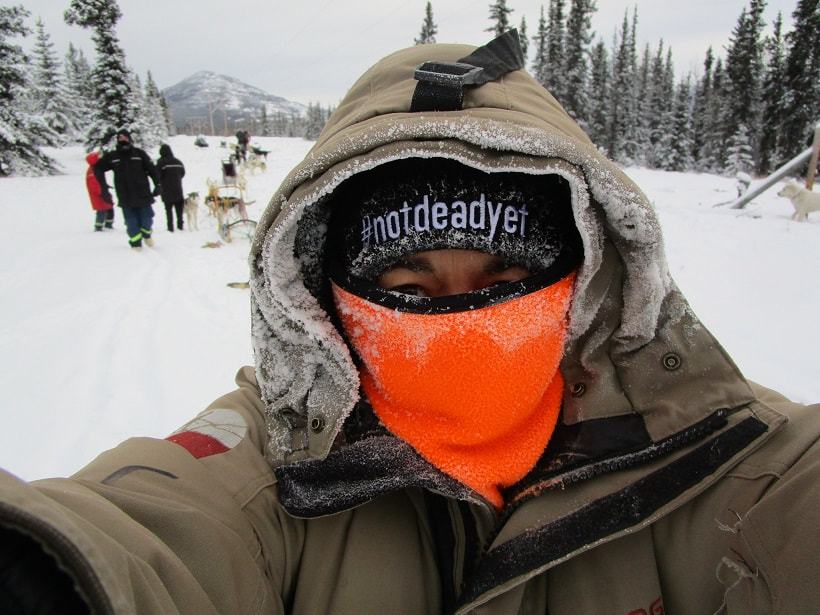|
“Bom dia (good morning),” I call out as I stride past a local woman, my trekking poles setting a steady pace. “Bom dia. Bom Camino,” she replies. My first acknowledgement as a pilgrim, half an hour into my 261 km trek along the Camino Portuguese, bound for Santiago de Compostella in Spain. I was on my way. Finally. It had already taken me more than an hour just to get to the starting point. I look around expectantly, double checking my GPS. I walk up and down the street, then around the block to be sure. Apparently, I’m standing next to the metro station. It’s my first day of my Camino trek and I can’t even find my way out of Porto! My GPS insists this is where the metro entrance is meant to be. I walk around the block again, but definitely no entrance to be found. I guess I’d better ask someone. “It’s the next block,” the policeman explains in English, pointing. “Behind that church over there.” And there it was: Trindade Metro Station, offering a 30-minute tram ride bypassing an unnecessary 12km of uninspiring industrial areas and busy roads. Alighting at Matosinhos, I flex my trekking poles, set the timer on my Fitbit and set off, following the yellow arrows along the Camino. How unlike those devout pilgrims who walked to Santiago more than 1200 years ago to cleanse their sins. St James and the scallop shellAccording to legend, the bones of St James the apostle are buried under the site of Santiago de Compostela, brought here by boat from Jerusalem. The pilgrimage movement to the shrine of St James started back in the 8th century and by the 12th century the Camino de Santiago was a popular route, one where sins could be forgiven. The scallop shell is associated with St James and the Camino (the Way). Medieval pilgrims wore a scallop shell during their journey to Santiago, not only as proof of their pilgrimage, but also as a handy utensil to hold their food and drink. Political unrest, the plague and the Protestant reformation led to a decline in pilgrimages across Europe in the 16th century. After the Camino de Santiago was proclaimed a European Cultural Itinerary in 1987 and a UNESCO World Heritage Site in 1993, it re-ignited that romantic appeal of a religious / spiritual pilgrimage. As a digital pilgrim of the 21st century, however, there is no longer a need for pain and suffering. Many fellow pilgrims I spoke with along the way were walking the Portuguese Camino for enjoyment. In comfort. With trip notes and GPS. It’s the sensible way. The modern pilgrim's checklist
Rugged coastlines, seafood and pastel de natasThere are several Camino paths leading to Santiago de Compostella and you can start at any point along each of these. While most people walk or cycle the more popular and traditional French Way (stretching about 800km from the foothills of the Pyrenees), the Portuguese Camino has fewer pilgrims and is relatively flat.
And although there’s less Camino signage in Portugal (enough to point you in the right direction), you really can’t get lost as long as you keep the wild Atlantic Ocean to your left. You can start from Lisbon if you’ve got 35 days to spare (620km), or Porto (approx. 260km) which is walkable in about two weeks. It was the allure of fishing villages, abundance of seafood and those tantalising Portuguese tarts (pastel de natas) which caught my attention. That, and not having to traverse any mountain ranges. Part 2: I’m with my day pack, on the road again Part 3: Finding my way along the path
1 Comment
Robbie murray
30/11/2019 07:34:33 pm
Wow Hari I really enjoyed being on the road with you from my couch but now I get to relive it. Thanks for the blog can't wait for Part 2.
Reply
Your comment will be posted after it is approved.
Leave a Reply. |
 Portuguese Camino 2019 Portuguese Camino 2019
Travel blogs
New Zealand 2008 Tibet 2007 New Zealand 2006 Melbourne 2006 United Kingdom 2004 Athens Olympics 2004 Peru 2003 Beijing to Athens 1994 Nepal 1991 Categories
All
Archives
December 2019
|
|
I acknowledge the traditional Custodians of the land on which I work and live, the Gubbi Gubbi / Kabi Kabi and Joondoburri people, and recognise their continuing connection to land, the waters and sky. I pay my respect to them and their cultures; and to Elders past, present and emerging.
|
© 2024 HARI KOTROTSIOS
|






